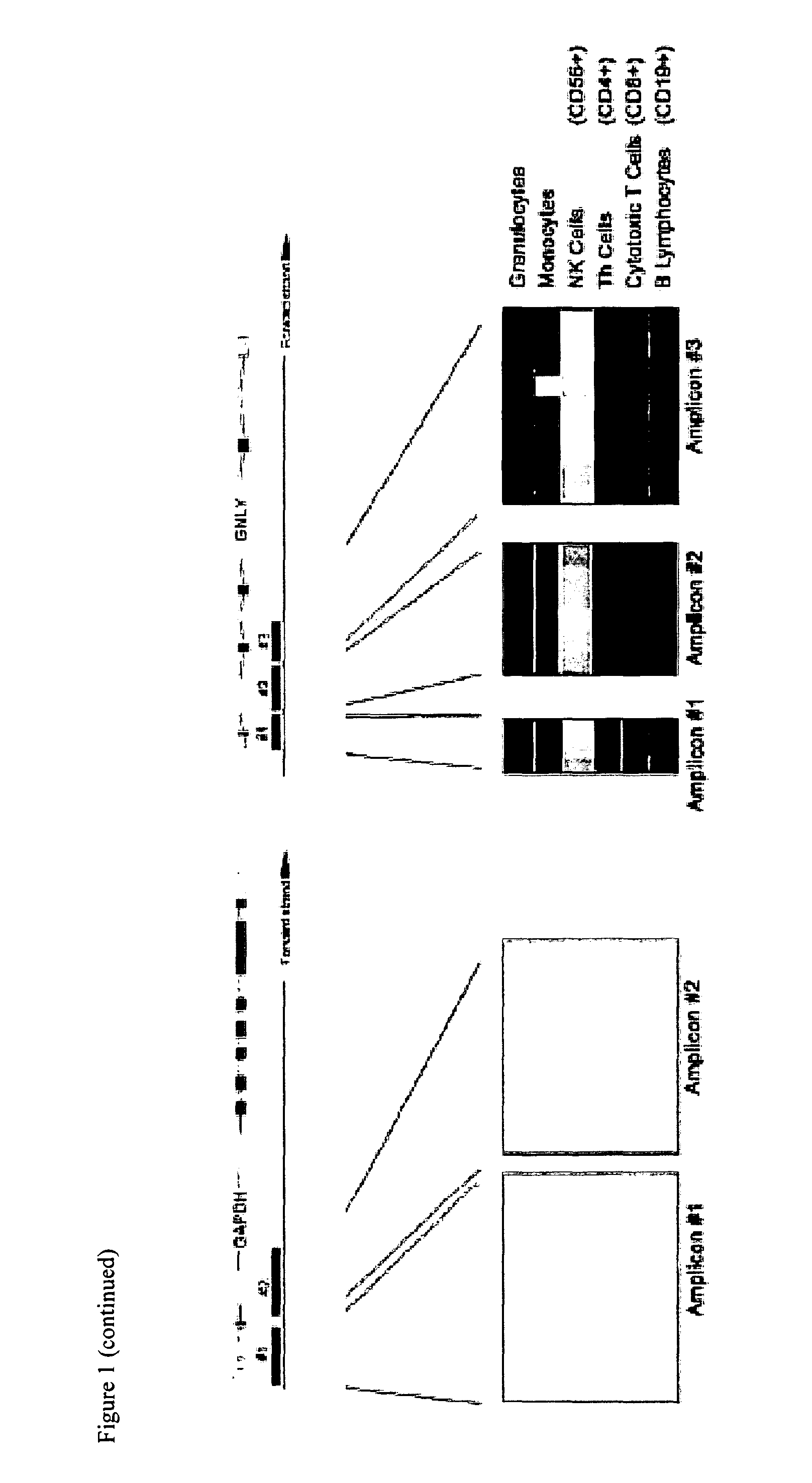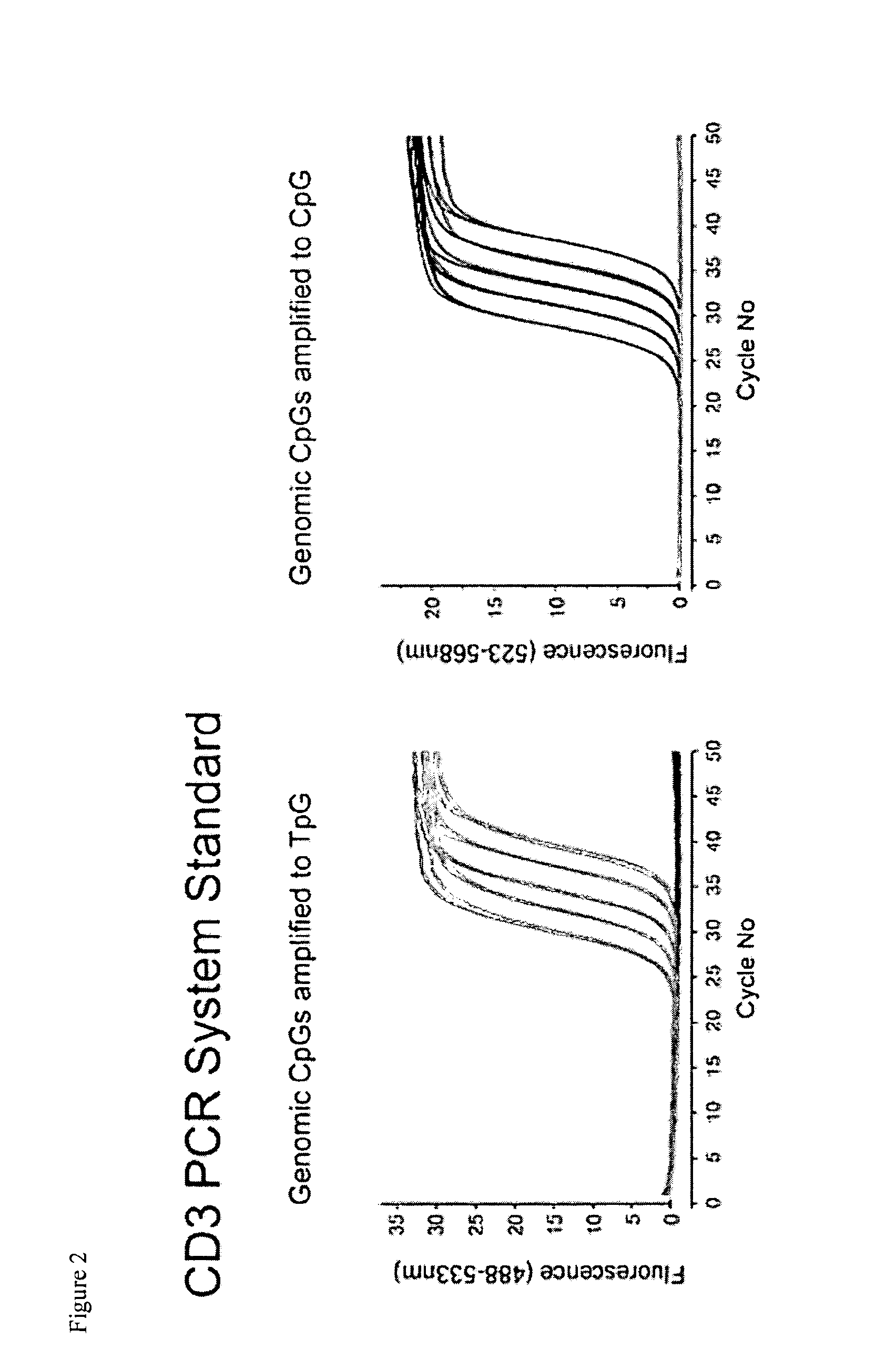Assay for Determining the Type and/or Status of a Cell Based on the Epigenetic Pattern and the Chromatin Structure
a cell type and/or cell type technology, applied in combinational chemistry, biochemistry apparatus and processes, chemical libraries, etc., can solve the problems of fragmentation of the t-lymphocyte subset of regulatory t cells within the tumour microenvironment, lack of reliable technical solutions, and limitations of all three technologies
- Summary
- Abstract
- Description
- Claims
- Application Information
AI Technical Summary
Benefits of technology
Problems solved by technology
Method used
Image
Examples
Embodiment Construction
Materials and Methods
Abbreviations:
[0100]Amp, amplicon; CD3D, T-cell surface glycoprotein CD3 delta chain; CD3G, T-cell surface glycoprotein CD3 gamma chain; FOXP3, Forkhead box protein P3; GAPDH, Glyceraldehyde-3-phosphate dehydrogenase; GNLY, Granulysin.
Cells and Tissue Samples
[0101]Formalin-fixed and paraffin-embedded tissue samples were retrieved from the archives of the Institute of Pathology, Charité-Universitätsmedizin Berlin, Campus Benjamin Franklin. Representative paraffin blocks of tumour and normal tissue were selected and tissue microarray (TMA) of the colorectal or bronchial carcinoma specimens with the corresponding normal parenchyma were constructed using cores of 1 mm in diameter. Fresh frozen ovarian tissue samples and blood were retrieved from the tumour bank ovarian cancer, Charite-Universitätsmedizin Berlin, Campus Virchow.
Isolation of Genomic DNA
[0102]For purification of genomic DNA from human blood, tissues, the DNeasy Blood and Tissue Kit (Qiagen, Hilden, Ger...
PUM
| Property | Measurement | Unit |
|---|---|---|
| Fraction | aaaaa | aaaaa |
| Fraction | aaaaa | aaaaa |
| Fraction | aaaaa | aaaaa |
Abstract
Description
Claims
Application Information
 Login to View More
Login to View More - R&D
- Intellectual Property
- Life Sciences
- Materials
- Tech Scout
- Unparalleled Data Quality
- Higher Quality Content
- 60% Fewer Hallucinations
Browse by: Latest US Patents, China's latest patents, Technical Efficacy Thesaurus, Application Domain, Technology Topic, Popular Technical Reports.
© 2025 PatSnap. All rights reserved.Legal|Privacy policy|Modern Slavery Act Transparency Statement|Sitemap|About US| Contact US: help@patsnap.com



